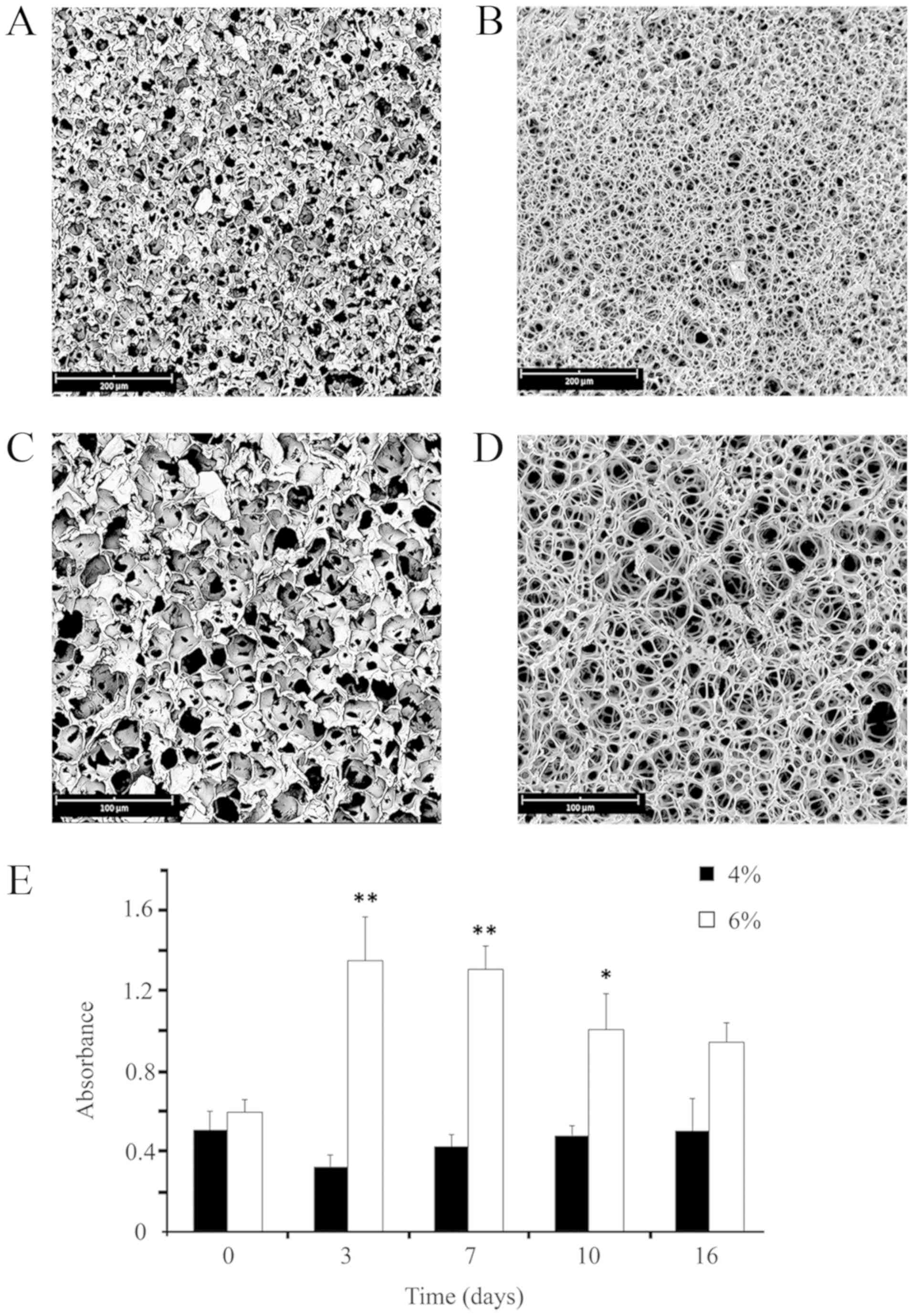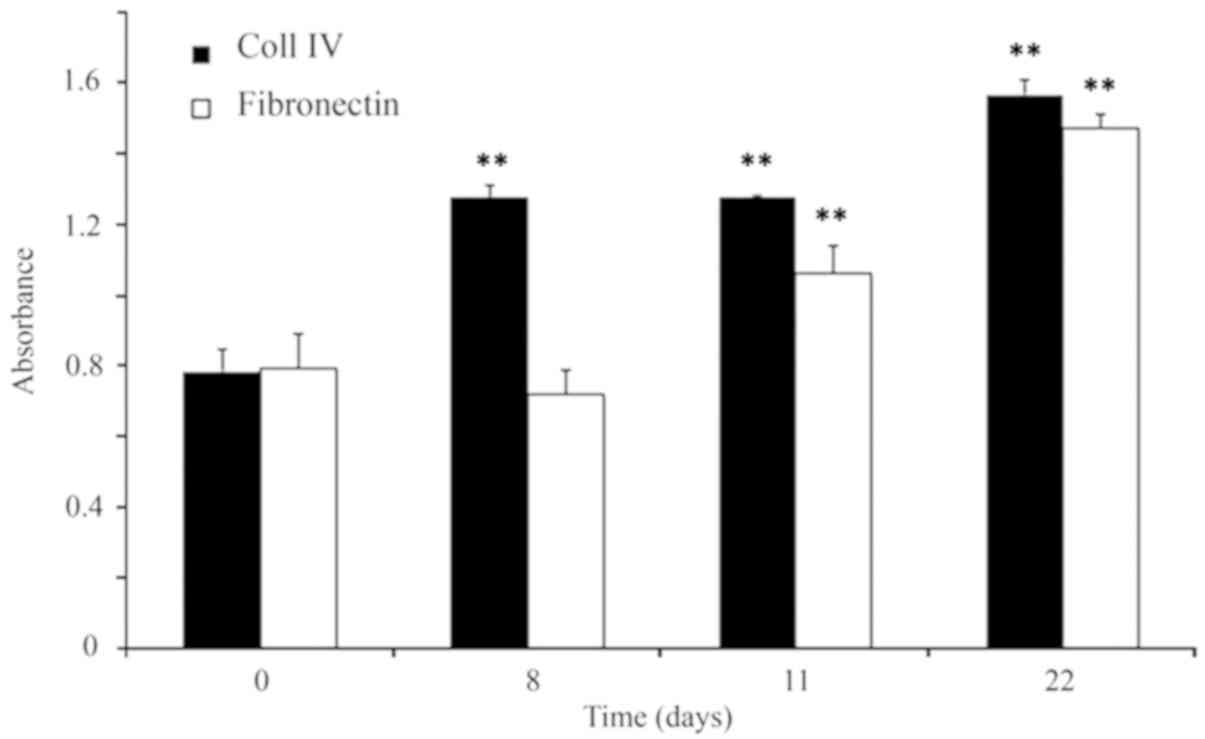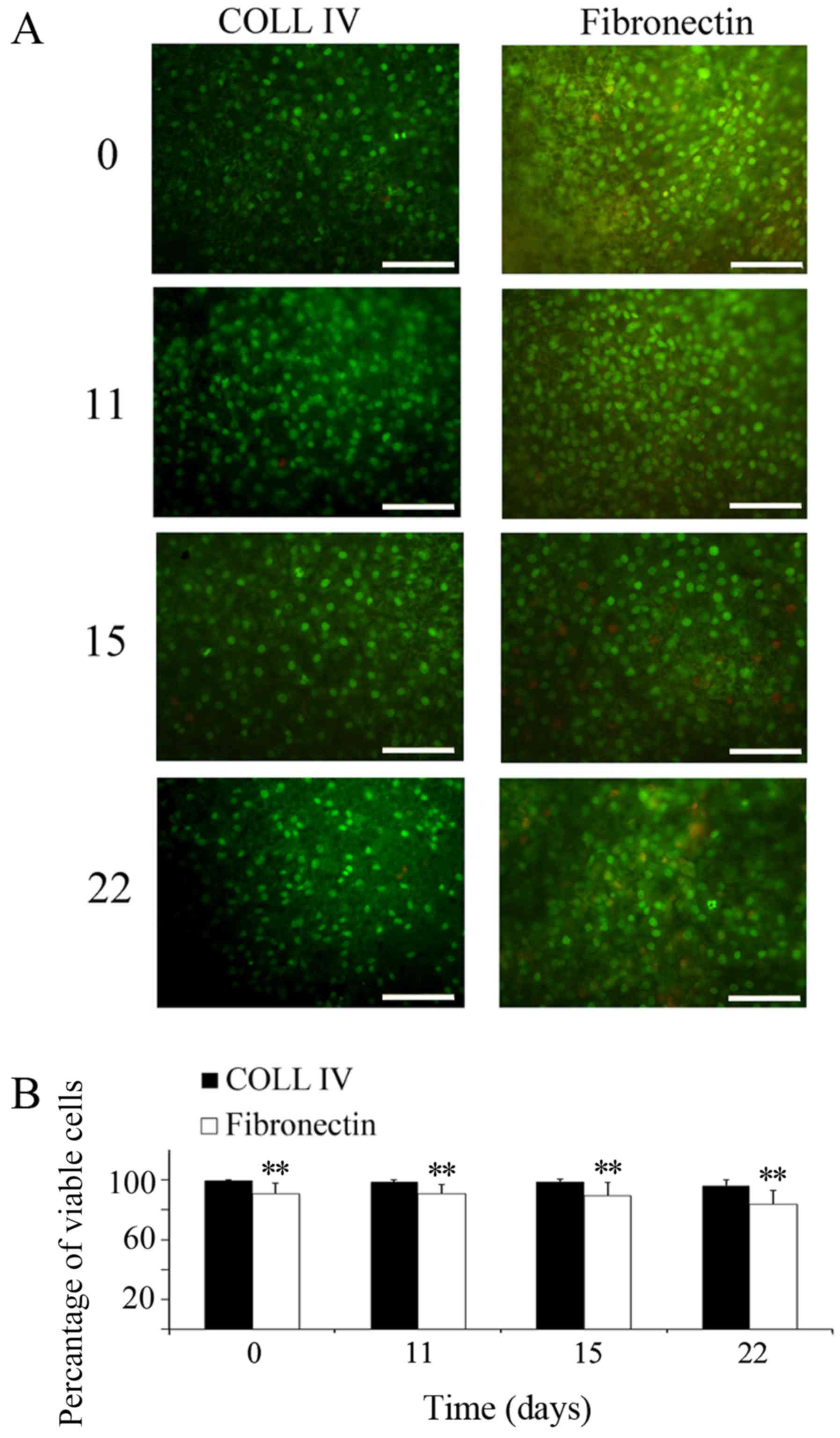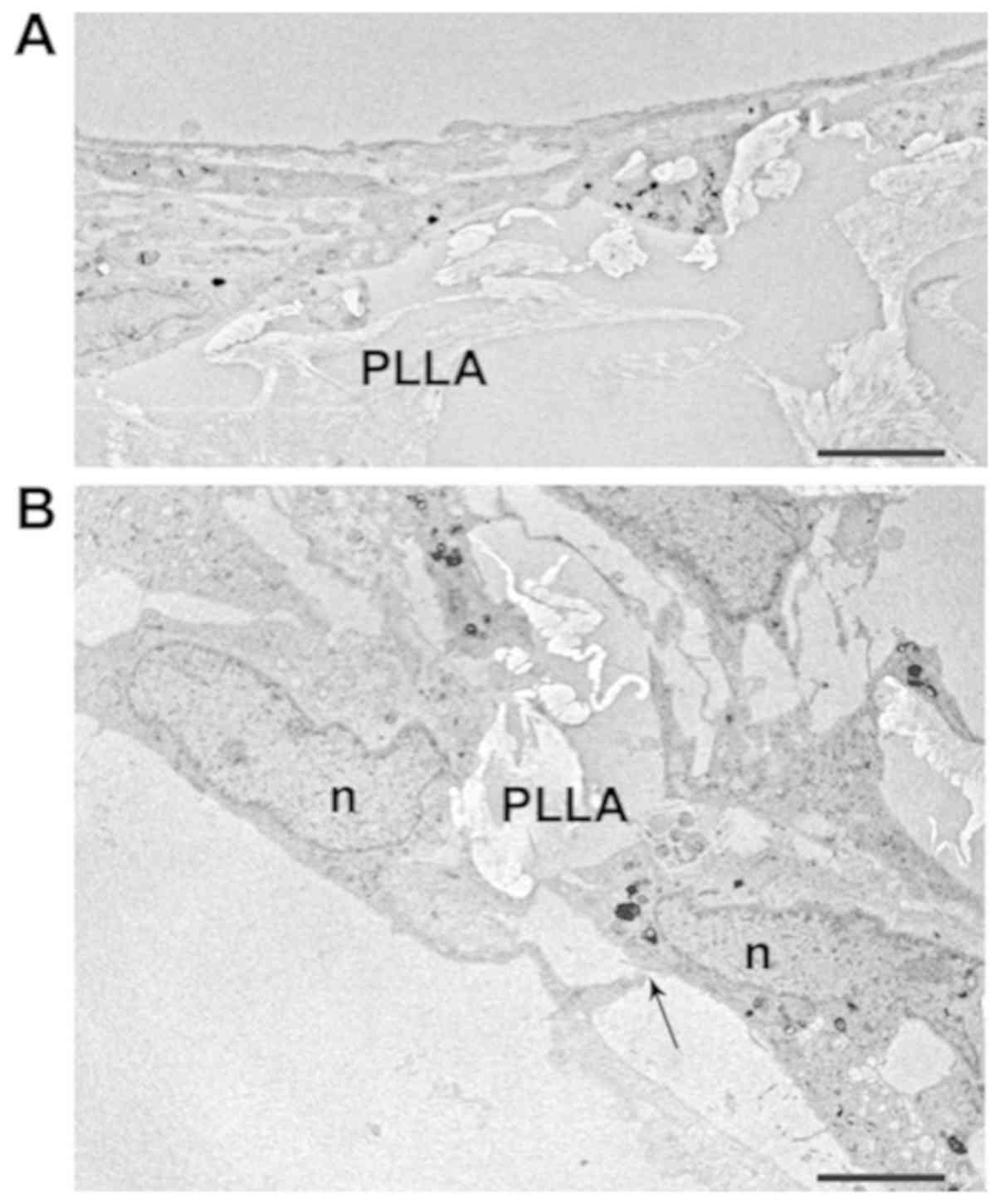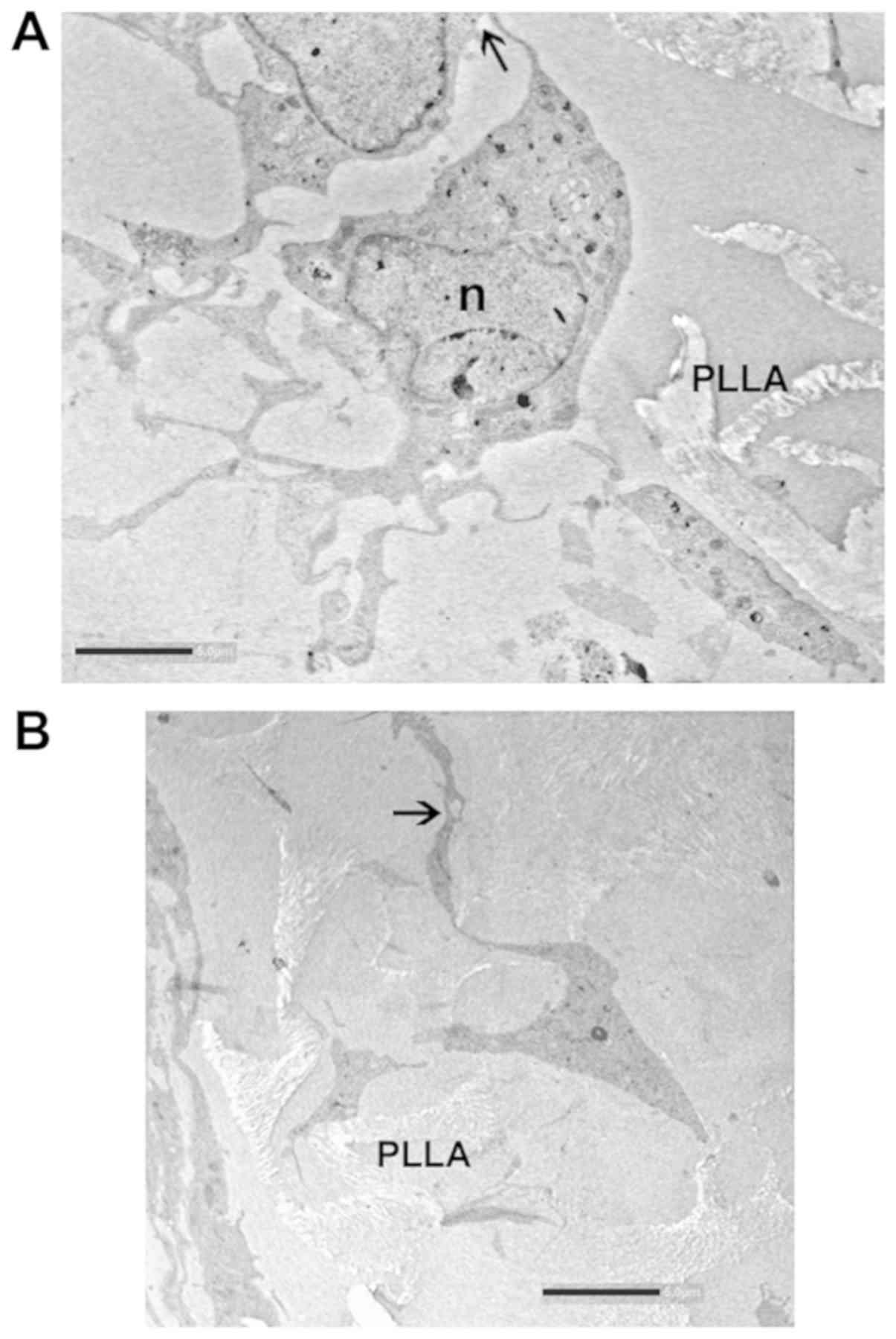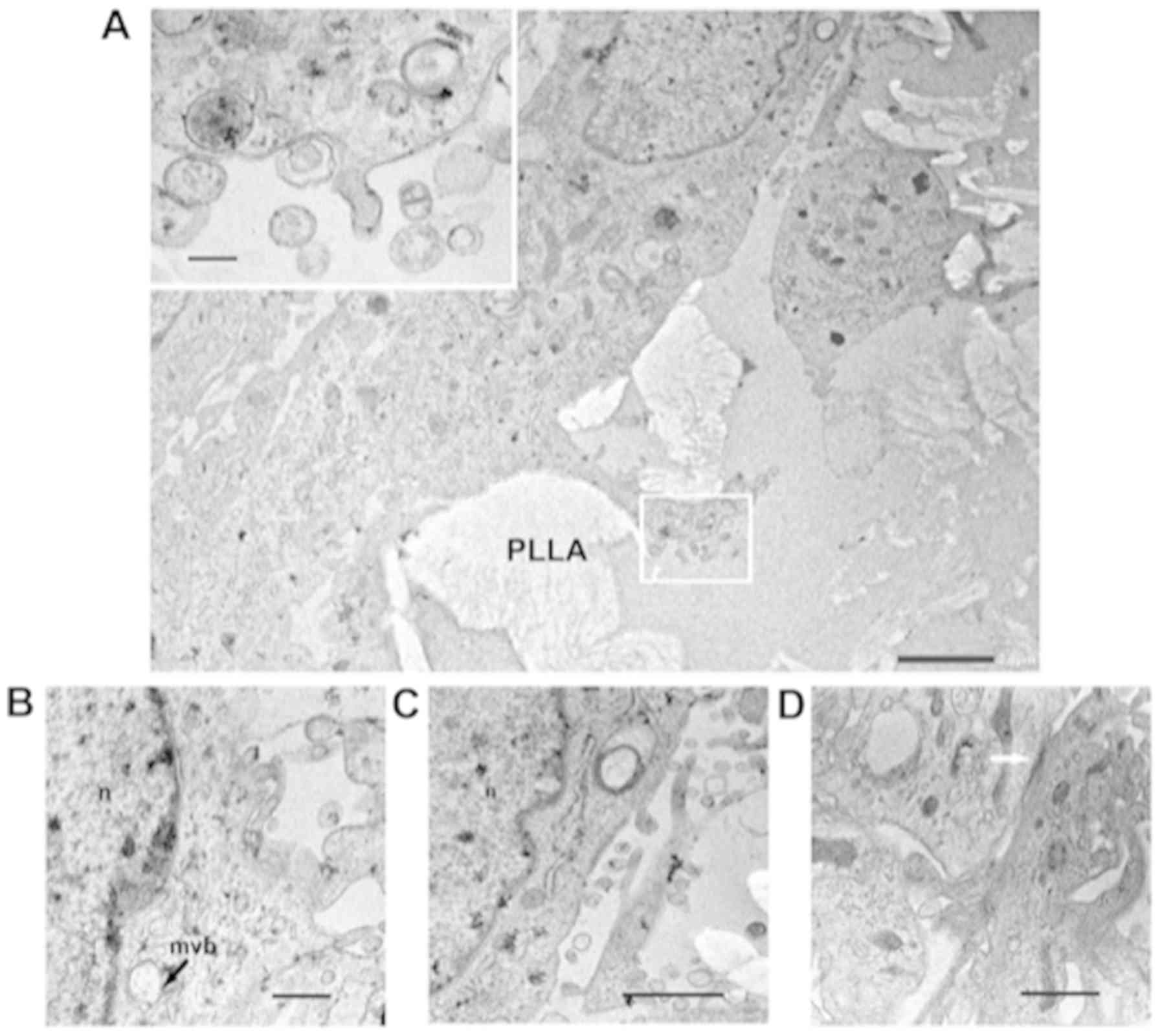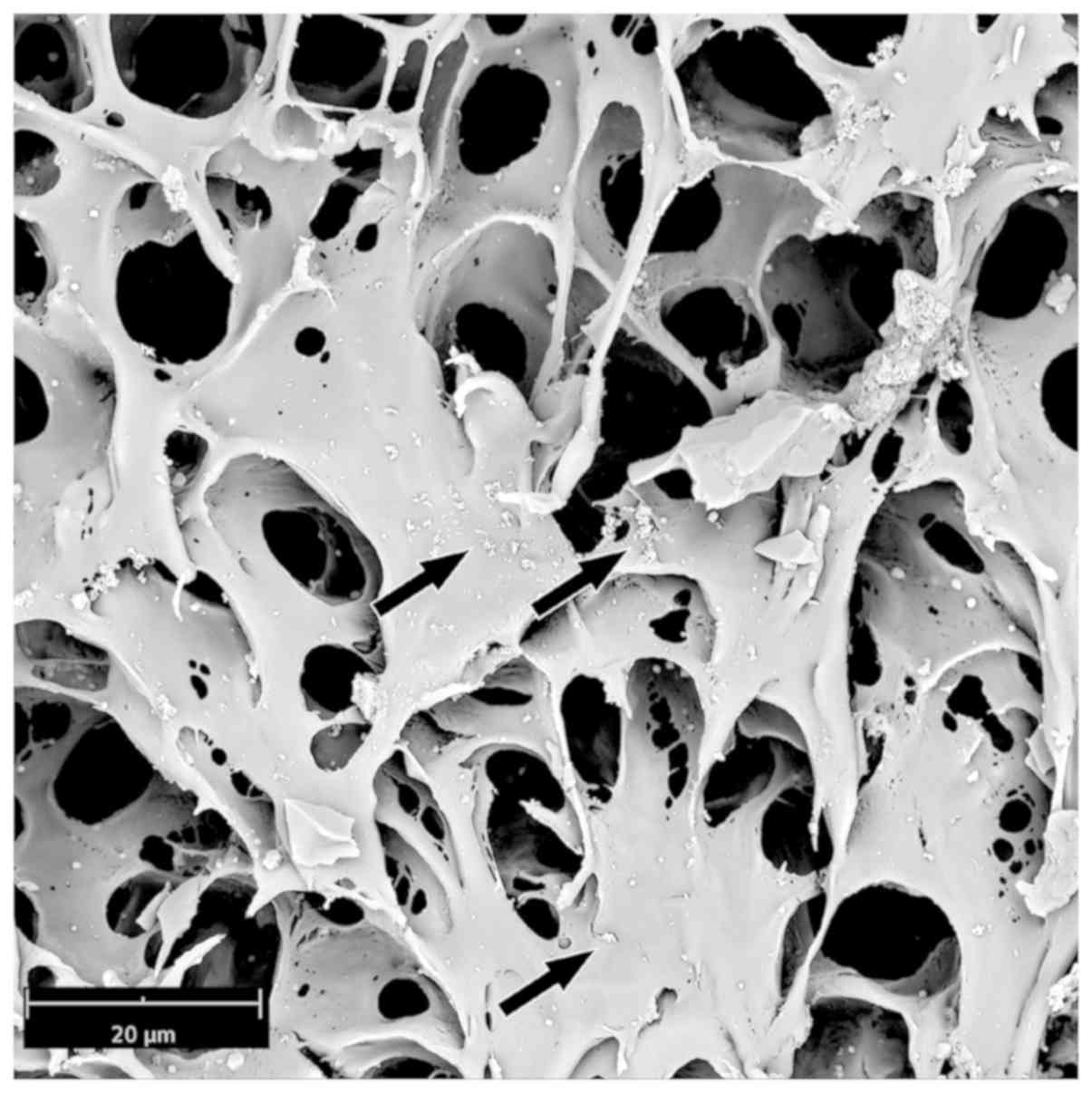|
1
|
Cocucci E and Meldolesi J: Ectosomes and
exosomes: Shedding the confusion between extracellular vesicles.
Trends Cell Biol. 25:364–372. 2015. View Article : Google Scholar : PubMed/NCBI
|
|
2
|
Mateescu B, Kowal EJ, van Balkom BW,
Bartel S, Bhattacharyya SN, Buzás EI, Buck AH, de Candia P, Chow
FW, Das S, et al: Obstacles and opportunities in the functional
analysis of extracellular vesicle RNA-an ISEV position paper. J
Extracell Vesicles. 6:12860952017. View Article : Google Scholar : PubMed/NCBI
|
|
3
|
Di Liegro CM, Schiera G and Di Liegro I:
Extracellular vesicle-associated RNA as a carrier of epigenetic
information. Genes (Basel). 8:E2402017. View Article : Google Scholar : PubMed/NCBI
|
|
4
|
Schiera G, Di Liegro CM, Saladino P, Pitti
R, Savettieri G, Proia P and Di Liegro I: Oligodendroglioma cells
synthesize the differentiation-specific linker histone H1.0; and
release it into the extracellular environment through shed
vesicles. Int J Oncol. 43:1771–1776. 2013. View Article : Google Scholar : PubMed/NCBI
|
|
5
|
Schiera G, Di Liegro CM and Di Liegro I:
Extracellular membrane vesicles as vehicles for brain cell-to-cell
interactions in physiological as well as pathological conditions.
Biomed Res Int. 2015:1529262015. View Article : Google Scholar : PubMed/NCBI
|
|
6
|
Schiera G, Di Liegro CM, Puleo V, Colletta
O, Fricano A, Cancemi P, Di Cara G and Di Liegro I: Extracellular
vesicles shed by melanoma cells contain a modified form of H1.0
linker histone and H1.0 mRNA-binding proteins. Int J Oncol.
49:1807–1814. 2016. View Article : Google Scholar : PubMed/NCBI
|
|
7
|
Maas SLN, Breakefield XO and Weaver AM:
Extracellular vesicles: Unique intercellular delivery vehicles.
Trends Cell Biol. 27:172–188. 2017. View Article : Google Scholar : PubMed/NCBI
|
|
8
|
Vella LJ, Sharples RA, Nisbet RM, Cappai R
and Hill AF: The role of exosomes in the processing of proteins
associated with neurodegenerative diseases. Eur Biophys J.
37:323–332. 2008. View Article : Google Scholar : PubMed/NCBI
|
|
9
|
Rajendran L, Honsho M, Zahn TR, Keller P,
Geiger KD, Verkade P and Simons K: Alzheimer's disease beta-amyloid
peptides are released in association with exosomes. Proc Natl Acad
Sci USA. 103:11172–11177. 2006. View Article : Google Scholar : PubMed/NCBI
|
|
10
|
Saman S, Kim WH, Raya M, Visnick Y, Miro
S, Saman S, Jackson B, McKee AC, Alvarez VE, Lee NC and Hall GF:
Exosome-associated tau is secreted in tauopathy models and is
selectively phosphorylated in cerebrospinal fluid in early
Alzheimer disease. J Biol Chem. 287:3842–3849. 2012. View Article : Google Scholar : PubMed/NCBI
|
|
11
|
Camussi G, Deregibus MC, Bruno S,
Cantaluppi V and Biancone L: Exosomes/microvesicles as a mechanism
of cell-to-cell communication. Kidney Int. 78:838–848. 2010.
View Article : Google Scholar : PubMed/NCBI
|
|
12
|
Rennert RC, Hochberg FH and Carter BS:
ExRNA in biofluids as biomarkers for brain tumors. Cell Mol
Neurobiol. 36:353–360. 2016. View Article : Google Scholar : PubMed/NCBI
|
|
13
|
Schiera G, Proia P, Alberti C, Mineo M,
Savettieri G and Di Liegro I: Neurons produce FGF2 and VEGF and
secrete them at least in part by shedding extracellular vesicles. J
Cell Mol Med. 11:1384–1394. 2007. View Article : Google Scholar : PubMed/NCBI
|
|
14
|
Proia P, Schiera G, Mineo M, Ingrassia AM,
Santoro G, Savettieri G and Di Liegro I: Astrocytes shed
extracellular vesicles that contain fibroblast growth factor-2 and
vascular endothelial growth factor. Int J Mol Med. 21:63–67.
2008.PubMed/NCBI
|
|
15
|
Knight VB and Serrano EE: Hydrogel
scaffolds promote neural gene expression and structural
reorganization in human astrocyte cultures. PeerJ. 5:e28292017.
View Article : Google Scholar : PubMed/NCBI
|
|
16
|
Shi W, Huang CJ, Xu XD, Jin GH, Huang RQ,
Huang JF, Chen YN, Ju SQ, Wang Y, Shi YW, et al: Transplantation of
RADA16-BDNF peptide scaffold with human umbilical cord mesenchymal
stem cells forced with CXCR4 and activated astrocytes for repair of
traumatic brain injury. Acta Biomater. 45:247–261. 2016. View Article : Google Scholar : PubMed/NCBI
|
|
17
|
Katiyar KS, Winter CC, Struzyna LA, Harris
JP and Cullen DK: Mechanical elongation of astrocyte processes to
create living scaffolds for nervous system regeneration. J Tissue
Eng Regen Med. 11:2737–2751. 2017. View Article : Google Scholar : PubMed/NCBI
|
|
18
|
Winter CC, Katiyar KS, Hernandez NS, Song
YJ, Struzyna LA, Harris JP and Cullen DK: Transplantable living
scaffolds comprised of micro-tissue engineered aligned astrocyte
networks to facilitate central nervous system regeneration. Acta
Biomater. 38:44–58. 2016. View Article : Google Scholar : PubMed/NCBI
|
|
19
|
Führmann T, Hillen LM, Montzka K, Wöltje M
and Brook GA: Cell-Cell interactions of human neural
progenitor-derived astrocytes within a microstructured 3D-scaffold.
Biomaterials. 31:7705–7715. 2010. View Article : Google Scholar : PubMed/NCBI
|
|
20
|
Ugbode CI, Hirst WD and Rattray M:
Astrocytes grown in alvetex® three dimensional scaffolds
retain a non-reactive phenotype. Neurochem Res. 41:1857–1867. 2016.
View Article : Google Scholar : PubMed/NCBI
|
|
21
|
Lau CL, Kovacevic M, Tingleff TS, Forsythe
JS, Cate HS, Merlo D, Cederfur C, Maclean FL, Parish CL, Horne MK,
et al: 3D Electrospun scaffolds promote a cytotrophic phenotype of
cultured primary astrocytes. J Neurochem. 130:215–226. 2014.
View Article : Google Scholar : PubMed/NCBI
|
|
22
|
Hyysalo A, Ristola M, Joki T, Honkanen M,
Vippola M and Narkilahti S: Aligned poly(ε-caprolactone) nanofibers
guide the orientation and migration of human pluripotent stem
cell-derived neurons, astrocytes, and oligodendrocyte precursor
cells in vitro. Macromol Biosci. 17:2017. View Article : Google Scholar : PubMed/NCBI
|
|
23
|
Conoscenti G, Schneider T, Stoelzel K,
Carfì Pavia F, Brucato V, Goegele C, La Carrubba V and
Schulze-Tanzil G: PLLA scaffolds produced by thermally induced
phase separation (TIPS) allow human chondrocyte growth and
extracellular matrix formation dependent on pore size. Mater Sci
Eng C Mater Biol Appl. 80:449–459. 2017. View Article : Google Scholar : PubMed/NCBI
|
|
24
|
Narayan D and Venkatraman SS: Effect of
pore size and interpore distance on endothelial cell growth on
polymers. J Biomed Mater Res A. 87:710–718. 2008. View Article : Google Scholar : PubMed/NCBI
|
|
25
|
Carfì Pavia F, Palumbo FS, La Carrubba V,
Bongiovì F, Brucato V, Pitarresi G and Giammona G: Modulation of
physical and biological properties of a composite PLLA and
polyaspartamide derivative obtained via thermally induced phase
separation (TIPS) technique. Mater Sci Eng C Mater Biol Appl.
67:561–569. 2016. View Article : Google Scholar : PubMed/NCBI
|
|
26
|
Carfì Pavia F, La Carrubba V and Brucato
V: Polymeric scaffolds based on blends of poly-l-lactic acid (PLLA)
with poly-d-l-lactic acid (PLA) prepared via thermally induced
phase separation (TIPS): Demixing conditions and morphology. Polym
Bull. 70:563–578. 2013. View Article : Google Scholar
|
|
27
|
Mannella GA, Conoscenti G, Carfì Pavia F,
La Carrubba V and Brucato V: Preparation of polymeric foams with a
pore size gradient via Thermally Induced Phase Separation (TIPS).
Mater Lett. 160:31–33. 2015. View Article : Google Scholar
|
|
28
|
Carfì Pavia F, La Carrubba V, Piccarolo S
and Brucato V: Polymeric scaffolds prepared via thermally induced
phase separation: Tuning of structure and morphology. J Biomed
Mater Res A. 86:459–466. 2008. View Article : Google Scholar : PubMed/NCBI
|
|
29
|
Di Bella MA, Zummo F, Carfì Pavia F,
Brucato VM, Di Liegro I and Schiera G: Migration of brain capillary
endothelial cells inside poly (lactic acid) 3D scaffolds.
Microscopy and imaging science: Practical approaches to applied
research and education. Méndez-Vilas A: Formatex Research Center;
Barcelona: pp. 260–264. 2017
|
|
30
|
Murphy AR, Laslett A, O'Brien CM and
Cameron NR: Scaffolds for 3D in vitro culture of neural lineage
cells. Acta Biomater. 54:1–20. 2017. View Article : Google Scholar : PubMed/NCBI
|
|
31
|
O'Connor SM, Stenger DA, Shaffer KM, Maric
D, Barker JL and Ma W: Primary neural precursor cell expansion,
differentiation and cytosolic Ca(2+) response in three-dimensional
collagen gel. J Neurosci Methods. 102:187–195. 2000. View Article : Google Scholar : PubMed/NCBI
|
|
32
|
Seidlits SK, Khaing ZZ, Petersen RR,
Nickels JD, Vanscoy JE, Shear JB and Schmidt CE: The effects of
hyaluronic acid hydrogels with tunable mechanical properties on
neural progenitor cell differentiation. Biomaterials. 31:3930–3940.
2010. View Article : Google Scholar : PubMed/NCBI
|
|
33
|
Mannella GA, Carfì Pavia F, Conoscenti G,
La Carrubba V and Brucato V: Evidence of mechanisms occurring in
thermally induced phase separation of polymeric systems. J Polym
Sci Part B Polym Phys. 52:979–983. 2014. View Article : Google Scholar
|
|
34
|
Schiera G, Bono E, Raffa MP, Gallo A,
Pitarresi GL, Di Liegro I and Savettieri G: Synergistic effects of
neurons and astrocytes on the differentiation of brain capillary
endothelial cells in culture. J Cell Mol Med. 7:165–170. 2003.
View Article : Google Scholar : PubMed/NCBI
|
|
35
|
Carfì Pavia F, Conoscenti G, Greco S, La
Carrubba V, Ghersi G and Brucato V: Preparation, characterization
and in vitro test of composites poly-lactic acid/hydroxyapatite
scaffolds for bone tissue engineering. Int J Biol Macromol.
119:945–953. 2018. View Article : Google Scholar : PubMed/NCBI
|
|
36
|
Liverani C, Mercatali L, Cristofolini L,
Giordano E, Minardi S, Porta GD, De Vita A, Miserocchi G, Spadazzi
C, Tasciotti E, et al: Investigating the mechanobiology of cancer
cell-ECM interaction through collagen-based 3D scaffolds. Cell Mol
Bioeng. 10:223–234. 2017. View Article : Google Scholar
|
|
37
|
Villalona GA, Udelsman B, Duncan DR,
McGillicuddy E, Sawh-Martinez RF, Hibino N, Painter C, Mirensky T,
Erickson B, Shinoka T and Breuer CK: Cell-seeding techniques in
vascular tissue engineering. Tissue Eng Part B Rev. 16:341–350.
2010. View Article : Google Scholar : PubMed/NCBI
|
|
38
|
Proia P, di Liegro CM, Schiera G, Fricano
A and Di Liegro I: Lactate as a metabolite and a regulator in the
central nervous system. Int J Mol Sci. 17(pii): E14502016.
View Article : Google Scholar : PubMed/NCBI
|
|
39
|
Giaume C, Koulakoff A, Roux L, Holcman D
and Rouach N: Astroglial networks: A step further in neuroglial and
gliovascular interactions. Nat Rev Neurosci. 11:87–99. 2010.
View Article : Google Scholar : PubMed/NCBI
|
|
40
|
Pannasch U and Rouach N: Emerging role for
astroglial networks in information processing: From synapse to
behavior. Trends Neurosci. 36:405–417. 2013. View Article : Google Scholar : PubMed/NCBI
|
|
41
|
Bosone C, Andreu A and Echevarria D: GAP
junctional communication in brain secondary organizers. Dev Growth
Differ. 58:446–455. 2016. View Article : Google Scholar : PubMed/NCBI
|
|
42
|
Frohlich D, Kuo WP, Fruhbeis C, Sun JJ,
Zehendner CM, Luhmann HJ, Pinto S, Toedling J, Trotter J and
Krämer-Albers EM: Multifaceted effects of oligodendroglial exosomes
on neurons: impact on neuronal firing rate, signal transduction and
gene regulation. Philos Trans R Soc Lond B Biol Sci.
369:201305102014. View Article : Google Scholar : PubMed/NCBI
|
|
43
|
Carfì-Pavia F, Turturici G, Geraci F,
Brucato V, La Carrubba V, Luparello C and Sconzo G: Porous poly
(L-lactic acid) scaffolds are optimal substrates for internal
colonization by A6 mesoangioblasts and immunocytochemical analyses.
J Biosci. 34:873–879. 2009. View Article : Google Scholar : PubMed/NCBI
|
|
44
|
Ma SH, Lepak LA, Hussain RJ, Shain W and
Shuler ML: An endothelial and astrocyte co-culture model of the
blood-brain barrier utilizing an ultra-thin, nanofabricated silicon
nitride membrane. Lab Chip. 5:74–85. 2005. View Article : Google Scholar : PubMed/NCBI
|
|
45
|
Frühbeis C, Fröhlich D, Kuo WP and
Krämer-Albers EM: Extracellular vesicles as mediators of
neuron-glia communication. Front Cell Neurosci. 7:1822013.
View Article : Google Scholar : PubMed/NCBI
|
|
46
|
Zagrean AM, Hermann DM, Opris I, Zagrean L
and Popa-Wagner A: Multicellular crosstalk between exosomes and the
neurovascular unit after cerebral ischemia. Therapeutic
implications. Front Neurosci. 12:8112018. View Article : Google Scholar : PubMed/NCBI
|
|
47
|
Balusu S, Van Wonterghem E, De Rycke R,
Raemdonck K, Stremersch S, Gevaert K, Brkic M, Demeestere D,
Vanhooren V, Hendrix A, et al: Identification of a novel mechanism
of blood-brain communication during peripheral inflammation via
choroid plexus-derived extracellular vesicles. EMBO Mol Med.
8:1162–1183. 2016. View Article : Google Scholar : PubMed/NCBI
|
|
48
|
Basso M and Bonetto V: Extracellular
vesicles and a novel form of communication in the brain. Front
Neurosci. 10:1272016. View Article : Google Scholar : PubMed/NCBI
|
|
49
|
O'Brien FJ: Biomaterials and scaffolds for
tissue engineering. Mater Today. 14:88–95. 2011. View Article : Google Scholar
|
|
50
|
Tajbakhsh S and Hajiali F: A comprehensive
study on the fabrication and properties of biocomposites of
poly(lactic acid)/ceramics for bone tissue engineering. Mater Sci
Eng C Mater Biol Appl. 70:897–912. 2017. View Article : Google Scholar : PubMed/NCBI
|















